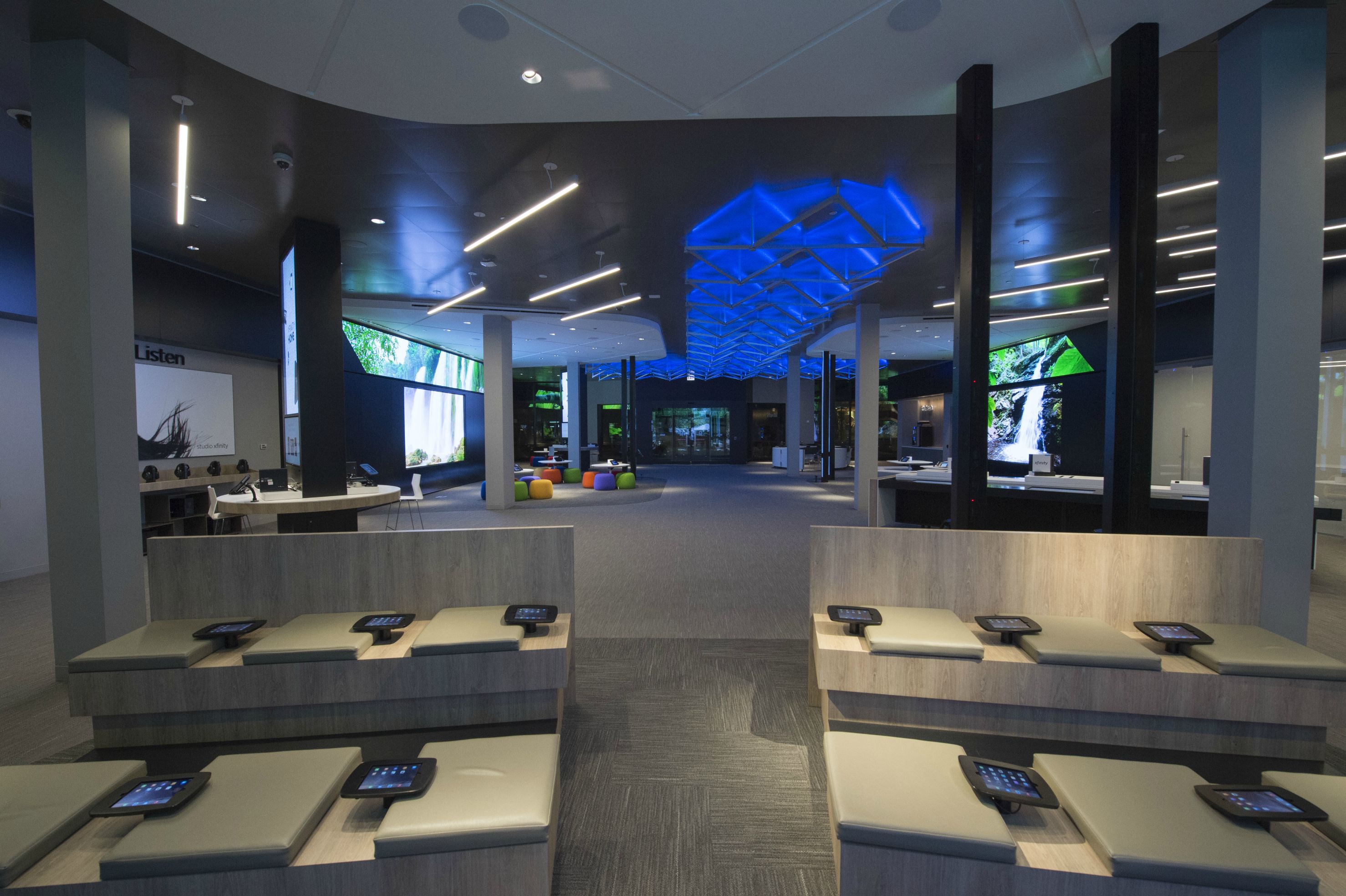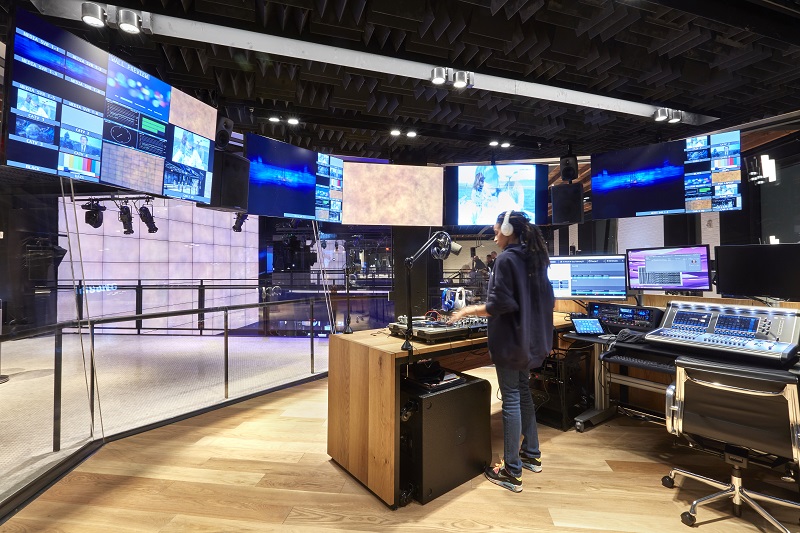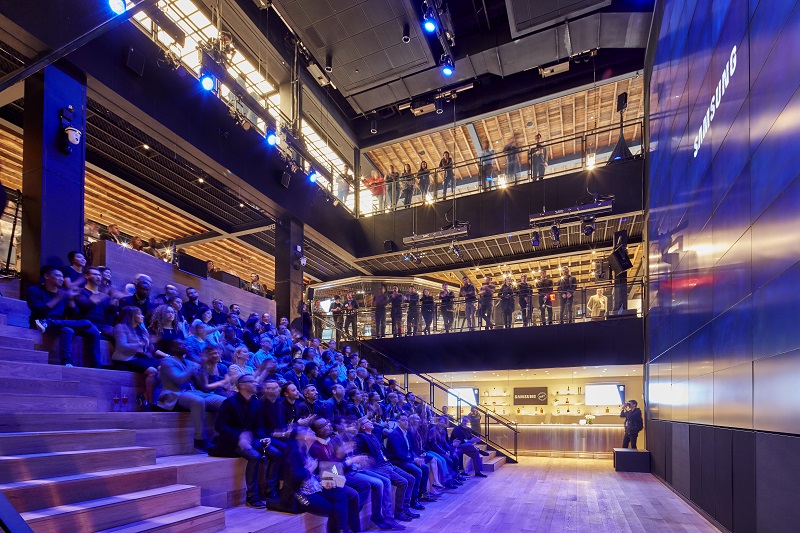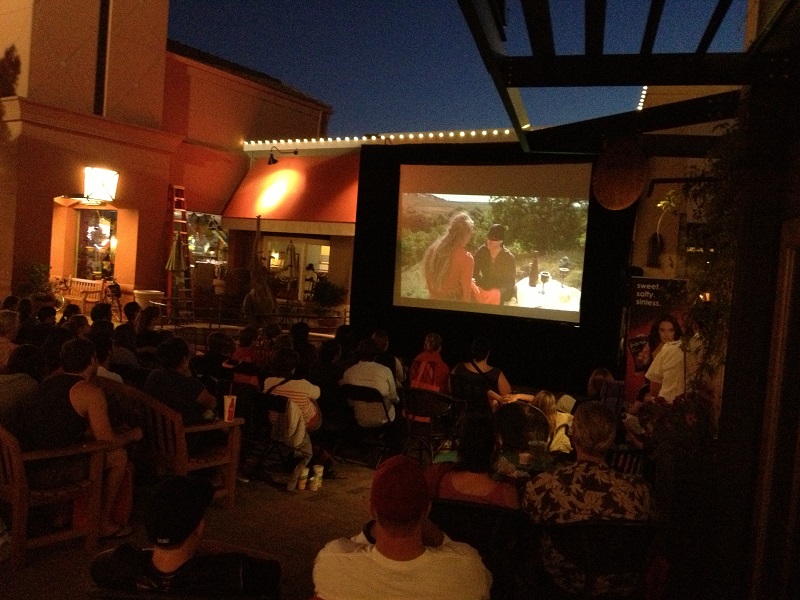Experiential Retail Offers Full Engagement
The future of retail is interactive, immersive and high-tech, with companies like Samsung and Comcast Xfinity offering a one-of-a-kind store experience.
By Nancy Crotti
At many retail centers today, you can take a free fitness class, play a video game or learn how to use the latest electronic gadget. And it’s a good bet that you’ll buy something, too.

Comcast’s Studio Xfinity store in Chicago entices visitors with interactive displays, workshops, product demonstrations and game nights.
Retailers, retail property owners and their advisors are turning self-service shopping into an engaging, educational and enjoyable experience. They are creating dynamic spaces for activities and elevating service to a level last seen in the heyday of the department store.
Widely known as experiential retail, this trend is as hard to define as it is multifaceted. That’s because it’s evolving, explained Fred Schmidt, president & COO of Coldwell Banker Commercial Affiliates in Madison, N.J.
Disney has been at it for decades, of course, channeling movies and TV shows into products, marketing events and theme-park attractions. So has the Mall of America in Bloomington, Minn., which entices visitors with an indoor amusement park, concerts in the rotunda, and an ever-changing mix of stores and dining experiences.
At the heart of today’s experiential trend is the realization that Americans like to shop in stores, notwithstanding the surge of online alternatives. Last year, 65 percent of respondents to a Coldwell Banker Commercial Affiliates survey said they enjoy the experience of visiting a store or mall. That included 63 percent of Gen Xers and 60 percent of Baby Boomers. In a surprise finding, three quarters of Millennials also agreed.
Throw in a special event or a promotion, and interest in making a purchase increases to 73 percent of total respondents. In general, the trend is toward shopping centers that seem as inviting as a town center, Schmidt said. Consumers expect a seamless experience, observed Tom McGee, CEO of the International Council of Shopping Centers. They either shop online for home delivery or pickup, or use smartphones to research products that are right in front of them in a store, he said.
Leading the charge

Samsung 837 in Manhattan’s Meatpacking District offers multiple high-tech features, such as a virtual reality tunnel and a recording studio.
Fifteen years after Apple opened its first brick-and-mortar stores, technology companies remain at the forefront of experiential retail. For Comcast’s new Studio Xfinity store in Chicago’s Fremont neighborhood, ESI Design Inc. recommended ditching the screens that display the waiting list for service in existing Xfinity stores. Customers would typically cluster around the screens, absorbed in their smartphones except for an occasional upward glance to check their place in line.
In those bored and disaffected visitors, Comcast spotted an opportunity to build brand loyalty. It selected staff trained in the hospitality industry to guide customers through the interactive displays that ESI placed strategically throughout the 7,500 square feet of retail space, noted Joseph Karadin, ESI’s director of physical design. It also hired an event coordinator to organize educational workshops, product demonstrations, sports-related events and game nights.
“We put out this idea of, ‘Think of our store as kind of the community center of the 21st century, where the local community can come in and connect not only with the brand but with each other,’” he said.
Comcast considers Studio Xfinity an innovation hub, reported David Williams, vice president of sales and marketing for Greater Chicago. Demonstration displays allow customers to check out current products and services and preview new ones. A merchandise wall holds products that complement Xfinity services. Comcast is also using the store to test an online toolkit that gives staff immediate access to customer account information and history.
“The goal is to develop and test technologies designed to improve the in-store experience and share them with other store locations in an effort to support the company-wide effort to transform the customer experience,” Williams wrote in an email.
Digital playgrounds

Samsung 837 also features a three-story theater equipped with a digital display that the company says is the largest of its kind.
Another cutting-edge example is Samsung’s multifaceted new digs in Manhattan’s Meatpacking District. Taking its name from its address at 837 Washington St., Samsung 837 is envisioned as a hybrid cultural destination, digital playground and marketing center. When the 55,000-square-foot facility opened in February, Zach Overton, its general manager, promised “programming which will tap into people’s passions such as art, music, entertainment, sports, wellness, culinary, technology and fashion, all powered and enriched by technology.”
Visitors can settle into stadium seating in a three-story-tall theater and view what Samsung says is the world’s largest multimedia display. A virtual reality tunnel offers VR product demonstrations, special events and themed content.
The high-tech influence extends to Samsung 837’s exhibit space. Its first installation, created by the design studio Black Egg, promises “a hyper-immersive and mind-bending exploration of social identity.”
More conventional retail services are also available in this cutting-edge setting. Customers get individual attention from Samsung technical staff. At a briefing center, business clients can learn about Samsung products.
In the NoHo neighborhood on the other side of Manhattan, Time Warner Cable will open its second experiential store this summer, An open floor plan, twenty-foot-high ceilings and 165 feet of wraparound frontage will promote customer engagement in the 5,700-square-foot space at 700 Broadway, explained Ariel Schuster, vice chair of RKF, who represented the owner. “The retailers are focusing more and more (on) the overall shopper experience and not just selling products,” Schuster said.
Old centers, new life
Property owners employ experiential retail of a different kind to keep older centers vital. In Corte Madera, Calif., a suburb of San Francisco, the tenant lineup at the 58-year-old Town Center at Corte Madera includes such brands as Barnes & Noble, Crate & Barrel and Urban Outfitters. Shoppers at the 440,000-square-foot lifestyle center can take a free yoga class and attend family movie nights. Outdoor seating provides places to linger and chat with friends.
“It’s the experience of the environment and how it ties back to your own lifestyle,” said Anjee Solanki, national director of U.S. retail services for Colliers International. “You’re spending more time, and by spending more time you’re going to be spending more money.”
It’s difficult to measure how much experiential retail affects sales, observed Vicki Eickelberger, executive vice president of Big Red Rooster, a retail brand experience and design company acquired by JLL last December. That is because many retailers track these stores’ performance through their omni-channel category rather than through the conventional same-store sales model, she explained.
Solanki argues for an online and brick-and-mortar retail presence. “The combination of the two is really where you start to see extremely successful centers survive, because they’re open to change and evolving with consumer behaviors,” she said. “There may be days when you just can’t get to the store. If I can access it online, I’ll do that. But that’s not going to stop me from going into the store the next time. … Regardless of technology, we still want to be around people.”








You must be logged in to post a comment.